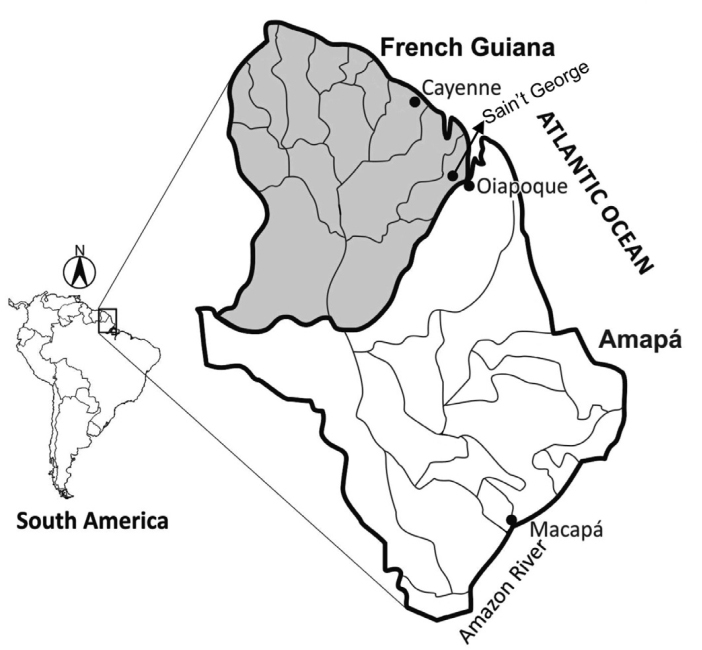SUMMARY
Malaria is a major health problem for people who live on the border between Brazil and French Guiana. Here we discuss Plasmodium vivax distribution pattern in the town of Oiapoque, Amapá State using the circumsporozoite (CS) gene as a marker. Ninety-one peripheral blood samples from P. vivax patients have been studied. Of these, 64 individuals were from the municipality of Oiapoque (Amapá State, Brazil) and 27 patients from French Guiana (August to December 2011). DNA extraction was performed, and a fragment of the P. vivax CS gene was subsequently analyzed using PCR/RFLP. The VK210 genotype was the most common in both countries (48.36% in Brazil and 14.28% in French Guiana), followed by the P. vivax-like (1.10% in both Brazil and French Guiana) and VK247 (1.10% only in Brazil) in single infections. We were able to detect all three CS genotypes simultaneously in mixed infections. There were no statistically significant differences either regarding infection site or parasitaemia among individuals with different genotypes. These results suggest that the same genotypes circulating in French Guiana are found in the municipality of Oiapoque in Brazil. These findings suggest that there may be a dispersion of parasitic populations occurring between the two countries. Most likely, this distribution is associated with prolonged and/or more complex transmission patterns of these genotypes in Brazil, bordering French Guiana.
KEYWORDS:
Plasmodium vivax; Circumsporozoite protein; Brazil-French Guiana border; Genetic marker

